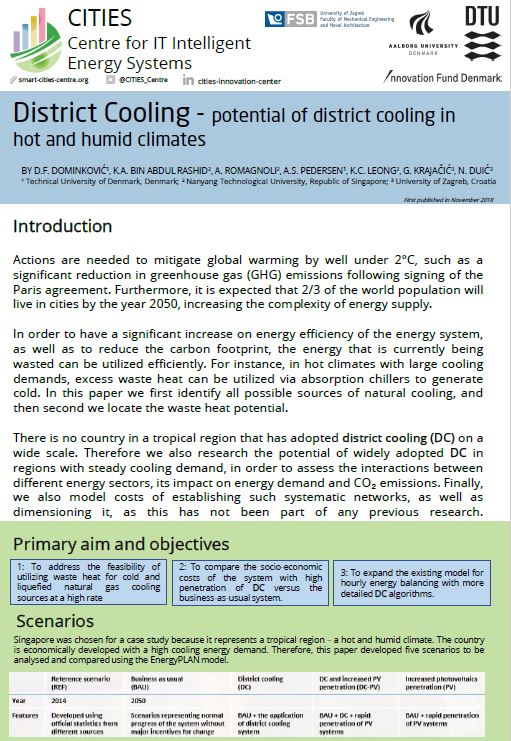Demo Case: Smart Energy Systems: Flexible Cooling of Data Centers
Energy system transition has been an ongoing topic in Denmark, Europe and the world. Denmark is at the forefront of the effort to make its energy system secure, affordable and carbon neutral. A significant share of wind generation in the total electricity mix of Denmark creates a need for smart
and intelligent operation of energy systems in order to reduce the amount of curtailed energy.
The latter reason is the main motivation to initiate this demo project. Energy demand for cooling of data centres has been increasing steadily in Denmark and the world. On the other hand, the aim of the energy transition is to make the system more efficient, including end-user energy efficiency. In order to continue the energy transition, as well as to integrate a rising number of data centres across Denmark, this demo project will look into possibilities for flexible and intelligent cooling of data centres.
A pilot absorption chiller will be installed at GEV premises. An absorption chiller is a machine that generates cooling energy by using heat at the supply temperature of approximately 70-80 oC. Initially, for this pilot, the absorption chiller will be used for comfort cooling of two meeting rooms. If the price based control of cooling proves to be successful in this demo project, the same technology and approach will be used for cooling of data centres.
To investigate the potential of using heat pumps and absorption chillers in parallel, a virtual heat pump is also being analysed, with a capacity equal to that of the absorption chiller. This allows the demo to analyse when the cooling would have come from a heat pump if one was available.
As a part of this demo project, hardware will be installed to measure indoor temperatures and transmit this data to the cloud. Consumption and temperatures of the chiller, pumps, water and meeting rooms will be transmitted. It will be possible to remotely switch the absorption chiller on/off.
The main goal of the strategy will be to utilize more heat and electricity when the prices are cheaper, achieving operational savings for the system. Another optional strategy will be to operate the system based on minimization of the CO2 emissions, based on the real-time CO2 level signal. This requires multivariate forecasts of price/CO2-level in the electricity and heat mix, which are known to be highly
correlated.
The work continues in the project Cool-Data.

